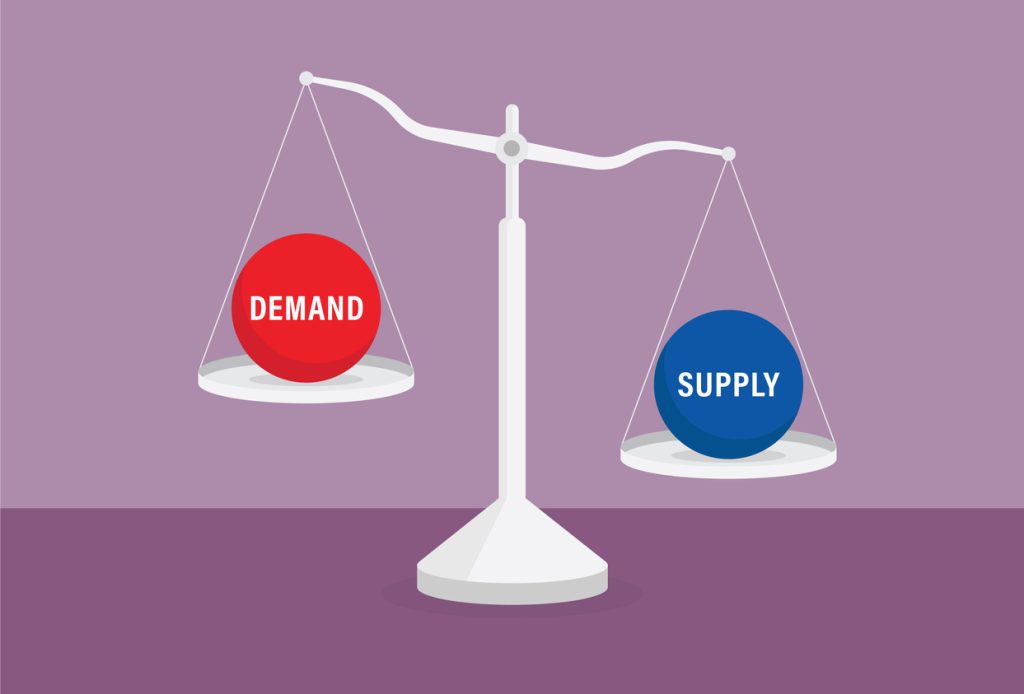All business owners are familiar with the rules of supply and demand. Few, however, realize how heavily trucking companies depend on supply and demand to function. We don’t blame them, either. With free two-day delivery becoming the norm, it feels like shipping just happens automatically. Most of us know that it’s more complicated than that, but just how much more complicated might surprise you. Predicting capacity trends is extremely challenging, and that’s particularly true in 2022.
Freight Transportation Always Has Four Seasons
Market conditions have always influenced the trucking industry, from capacity to rates. Still, there’s usually some level of predictability. There are four seasons in the logistics work. You have:
- The Quiet Season (January – March)
- The Produce Shipping Season (Produce Shipping Season (April – July)
- The Peak Shipping Season (August – October)
- The Holiday Shipping Season (November – December)
During the quiet season, freight volume is always down. While we don’t have to deal with snow weather as much in Los Angeles, the weather in most of the country isn’t the most shipping-friendly. After the busy holiday season, the transportation industry enjoys a slower period to recover and plan for the busier months.
Produce shipping season begins in spring, with volume picking up. Since there are more loads for carriers to choose from, the market tightens, prices rise, and shippers tend to have a harder time finding available trucks. The rates rise for everyone, including non-produce shippers. With many companies fully booked transporting high-paying produce loads, it can be extra tough on other shippers to get their freight on its way.
In peak season, the produce boom has died down, only to be taken over by back-to-school shipping and preparation for the holidays. Rates continue to rise during peak sales season. Once the holidays hit, there’s a rush to ship last-minute orders before holiday closures. This year, however, the patterns have shifted.
In 2022, the usual capacity trends are off kilter. Why?
The 2020 pandemic along with a multitude of other factors has led to a number of unforeseen changes in the landscape of logistics. The supply chain issues weren’t completely new, but lockdown led to unpredictable demand and an unprecedented labor shortage. The problems aren’t over. Now, high fuel and equipment prices have put many small carriers out of business. It’s much harder for independent drivers to get a foot in the door or continue existing operations, placing even greater demand on larger carriers.
Most larger carriers are struggling to keep enough drivers on staff, however. The result is that the excess capacity that usually happens ahead of peak season isn’t there. Supply is contracting early, resulting in an unprecedented change in typical annual trends. That’s not necessarily a bad thing. It might mean this year’s seasonal shifts will include less pronounced drop-offs than usual. Many companies are seeing more success this year than last, with some nearly doubling their revenue year over year.
While numbers are up, 2022’s peak season remains unpredictable
Are you confident about demand for the next few months? If you’re like most business owners, the answer is no. As shippers like yourself do their best to plan ahead and hire trucks in case demand over the coming months exceeds their expectations, logistics companies are equally unsure what the second half of 2022 will look like.
Since our customers have varying predictions for their upcoming needs, fleet owners can’t predict much of anything. This year has been a roller coaster, with our volumes impacted by everything from a backed-up port to manufacturing slowdowns. When sudden drop-offs happen, drivers leave to seek out additional work, leaving fleet owners short-staffed when things pick up again.
Fortunately, since BYX doesn’t service many retail stores, we have a steadier volume year-round than most – Even with the confusing capacity trends. We do our best to operate with full transparency and consistent, competitive rates. If you have any questions about what to expect in the last few months of 2022, give us a call and we’ll be happy to help.








